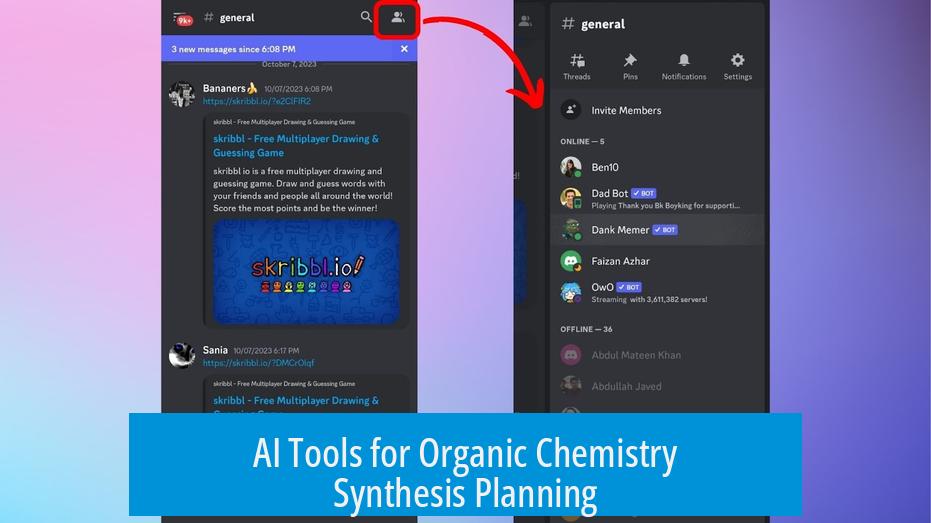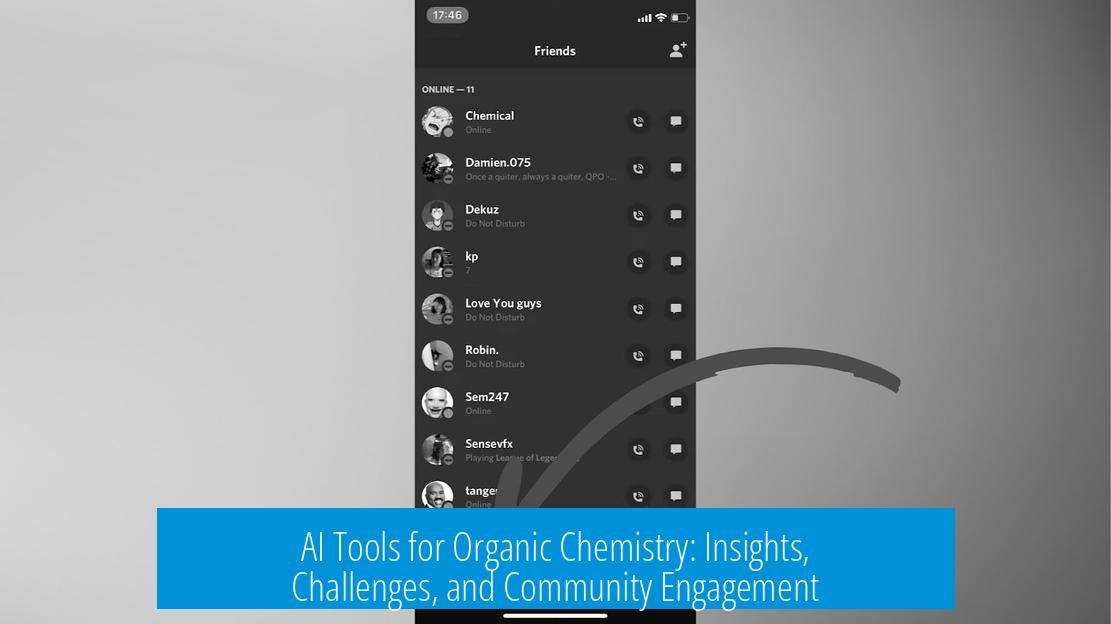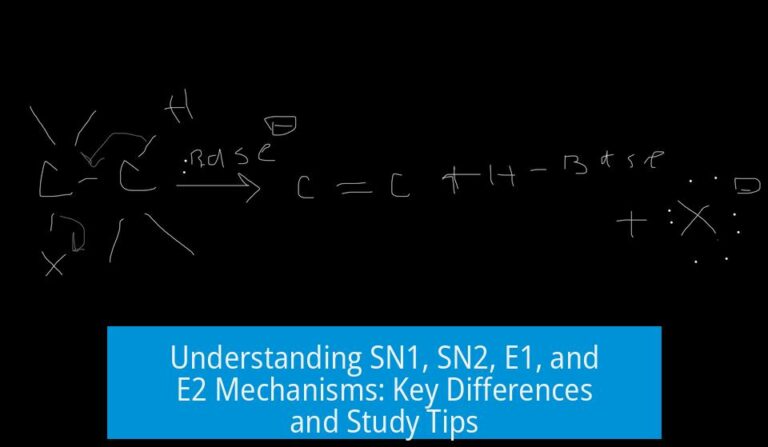AI Tools for Organic Chemistry Synthesis Planning

AI tools offer assistance in planning organic synthesis but face significant limitations in accuracy and logical reasoning. Several AI platforms aim to support chemists in forward and retro synthesis planning, yet their performance varies widely.
Popular AI Synthesis Tools
- Chematica / Synthia: Known for synthesis planning, though detailed performance evaluations are scarce.
- Reaxys AI Synthesis Planner: Available online (rxn.app), it produces decent results but users report mixed experiences regarding output quality.
- ASKCOS from MIT: A free tool offering forward and retro synthesis routes. As an academic resource, it encourages exploration without licensing fees.
- ChemAIRs: A commercial AI tool requiring a license, indicating potential constraints for casual users or students.
Limitations and Critiques of AI in Organic Chemistry
While AI tools can generate plausible synthetic routes, several critiques highlight their shortcomings.
Inability to Solve Novel and Logical Problems

- Many AI systems struggle with chemistry problems not documented in public databases, limiting their usefulness for original research or academic challenges.
- AI’s intrinsic difficulty in logical reasoning prevents it from reliably following complex mechanistic steps essential in organic chemistry.
- This fundamental limitation means AI cannot fully replace human insight, especially in cases requiring deep understanding and creativity.
User Experiences
Some users describe AI-assisted synthesis planning as “decent” but question the consistency and reliability, especially when dealing with unfamiliar or intricate molecules.
User Interaction and Community Resources
Communities actively discuss AI tools and share experiences. For instance, collaborative platforms like Google Gemini facilitate information exchange and evaluation of AI capabilities in synthetic chemistry.
Key Takeaways

- AI synthesis planners vary in accessibility, with free options like ASKCOS and commercial tools like ChemAIRs.
- Existing AI tools provide helpful but sometimes inconsistent predictions in organic synthesis.
- AI lacks the logical reasoning capabilities essential for solving novel or complex chemistry problems.
- User feedback is critical to understanding AI limitations and improving tool development.
- Community resources play a key role in facilitating knowledge sharing and evaluating AI in organic chemistry.
Unveiling AI in Organic Chemistry Synthesis Planning: Tools, Triumphs, and Troubles
Can AI truly conquer the complex world of organic chemistry synthesis planning? The quick answer is: it tries. A handful of AI-powered tools promise to shake up how chemists plan syntheses. But how reliable are these electronic helpers? Let’s dive in, unpack the current state of AI in this niche, and see whether computers are becoming chemists’ new best friends—or just noisy lab assistants.
The New Kids on the Flask: AI Synthesis Planning Tools
The field isn’t short on AI contenders. Tools like Chematica (now Synthia), Reaxys AI Synthesis Planner, ASKCOS from MIT, and ChemAIRs are stepping up to help plan organic molecule construction. Each carries a unique flavor—some free, some pricey, some polished, and some still rough around the edges.
Chematica/Synthia is often mentioned when discussing AI in synthesis planning. While it’s known in the community, detailed independent evaluations are scarce. It seems positioned as a solid option, but transparent user reviews are a bit of a mystery.
Reaxys AI Synthesis Plannerthis link.
For those watching their wallets, ASKCOS from MIT stands out. Completely free and capable of both forward and retrosynthesis tasks, it’s probably the most accessible tool in the lot. Whether you want to break down a complex target molecule into simpler precursors or predict pathways to build it up, ASKCOS offers a user-friendly gateway.
On the other hand, ChemAIRs demands a license, requiring a financial commitment. It’s not clear how much edge it holds over free alternatives, but premium pricing usually implies advanced features or proprietary algorithms.
AI’s Bumpy Road: Limitations and Persistent Doubts

Despite the impressive assembly of AI systems, skeptics sound a cautionary note. Here’s the clincher: many users ask, “Is there any AI that isn’t terrible at organic chemistry?” This straight talk reveals an essential problem—AI tends to struggle with organic synthesis problems not previously documented online or straightforwardly answerable by data mining.
Why is that? The fundamental reason is that organic chemistry revolves around logic, intuition, and sometimes pure ingenuity—things AI excels at mimicking but not mastering. As one sharp critique puts it, AI “cannot follow logic” properly, making it “an inherently impossible task,” at least for now. In other words, AI might spit out plausible pathways but misses the deeper reasoning steps human chemists use to validate and refine syntheses.
This limitation hits home for students or professionals tackling novel, school-level problems that don’t exist in the AI’s training sets. If the problem isn’t in the archives, AI flounders. Thus, while AI is superb for rapid hypothesis generation or revisiting known routes, it’s less trustworthy for pioneering synthetic strategies.
Where Users Gather: Sharing Stories, Blending Experiences
The organic chemistry community doesn’t stay silent. Forums and groups where users share firsthand encounters with AI tools are buzzing hubs of insight. For instance, a resource like this shared link showcases user discussions, tool reviews, tips, and workarounds that enrich the collective knowledge pool.
Such interactions reveal practical nuance. One may grab ASKCOS for free, try Reaxys for a quick look, and only invest in ChemAIRs if the budget allows. Alongside, users swap hacks on interpreting AI outputs or combining AI guidance with human judgement to bridge logical gaps.
Putting It All Together: How Should Chemists Use AI Today?
So, what’s a chemist to do with these mixed reviews and mixed tools?
- Use AI as a brainstorming partner, not a final authority. AI can rapidly produce possible synthesis routes, prompting humans to evaluate and improve.
- Explore free options first. Tools like ASKCOS offer a risk-free playground to experiment with AI-driven retrosynthesis.
- Be cautious with the quality. Don’t expect AI to flawlessly solve complex or unseen synthesis challenges. Human expertise remains critical.
- Engage with communities. Sharing experiences helps chemists collectively raise the effectiveness bar for AI in synthesis planning.
- Keep an eye on developments. AI research moves fast—new models could improve logic-following capabilities substantially.
Why Does This Matter to You?

If you’re a student juggling tricky synthesis problems, an R&D scientist scouting for new approaches, or just a chemistry enthusiast curious about the AI wave, knowing where AI shines and where it stumbles saves frustration and wasted time.
Also, it tempers expectations: AI is no magic wand for organic chemistry. Behind every suggested route, there’s a need for meticulous human checking and creative problem solving. Sometimes, AI-generated plans highlight overlooked avenues; other times, they miss what a seasoned chemist spots instinctively.
Future Prospects: Could AI Learn to Reason in Organic Chemistry?
The big question lingers: will AI ever truly understand or “follow logic” like a human chemist? Some researchers believe hybrid models integrating symbolic reasoning with machine learning could bridge this gap. In such a future, AI wouldn’t just regurgitate database patterns but actively manipulate chemical concepts to solve novel problems.
Until then, the current crop of AI tools serves as powerful assistants, not replacements. They automate routine parts of synthesis planning, propose shortcuts, and accelerate research—but their suggestions must pass the human logic checkpoint.
Final Thoughts
AI in organic chemistry synthesis planning is a fascinating blend of promise and pitfalls. Tools like Chematica/Synthia, Reaxys, ASKCOS, and ChemAIRs pave partly paved roads, each with quirks and perks.
Reaxys scores middling, ASKCOS shines in accessibility, and ChemAIRs offers premium features on demand.
Critical voices remind us not to give AI too much credit just yet, especially where logic-driven creativity is paramount. Yet, community knowledge-sharing and continuous tool evolution keep the hope alive for smarter chemistry bots.
Are you ready to team up with AI, or is the old-fashioned beaker and brain still your go-to plan? Either way, blending human insight with AI’s computational muscle might just be the best formula today’s organic chemist can ask for.
What AI tools are available for organic chemistry synthesis planning?
Several AI tools exist, including Chematica/Synthia, Reaxys AI Synthesis Planner, ASKCOS from MIT, and ChemAIRs. Each offers different features and access requirements.
How reliable is the Reaxys AI Synthesis Planner?
Reaxys AI can work decently but has questionable quality based on user experience. It may not always provide accurate or practical synthesis routes.
Can AI tools solve novel organic chemistry problems found in school assignments?
Most AI tools struggle with new or uncommon problems, as they rely heavily on existing data and may fail to apply correct logic to unseen cases.
What are the main limitations of AI in organic chemistry?
AI tools have issues following complex logical steps necessary for organic synthesis. This limits their effectiveness in problem-solving beyond pattern recognition.
Are any AI synthesis planners free to use?
Yes, ASKCOS from MIT offers free access and supports both forward and retro-synthesis planning.
Is there a community or resource to share experiences with AI chemistry tools?
Yes, users share experiences and resources online, for example through the link https://g.co/gemini/share/38ea75096df8, fostering discussion about these tools.





Leave a Comment